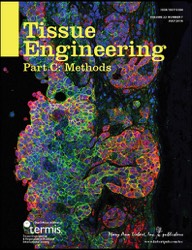Hepatocyte isolation after laparoscopic liver resection

Liver tissue obtained from partial hepatectomy is a common source for isolation of primary human hepatocytes. Until now, liver resections were most commonly performed by conventional open surgery. Although the laparoscopic approach is currently emerging in liver surgery, data on the outcome of hepatocyte isolation from laparoscopically resected liver tissue is not available. A total of 22 hepatocyte isolations were performed using the two-step collagenase perfusion technique from October 2015 until March 2016. Liver tissue was obtained from n=15 open liver resections (OLR) and n=7 laparoscopic liver resections (LLR). Isolation parameters (cell yield, viability, percoll survival) were assessed and hepatocyte function (plating efficiency, urea, albumin, and aspartate aminotransferase) was measured over a culture period of 6 days (OLR: n=13; LLR: n=3). Total cell yield (OLR: 36.81 ± 6.77 x106 cells/g vs. LLR 16.84 ± 10.66 x106 cells/g, p=0.0318) as well as viable yield (OLR 31.70 ± 6.05 x106 cells/g vs. LLL 14.70 ± 9.89 x106 cells/g, p=0.0260) were significantly higher in the OLR group. Subgroup analysis revealed that the worse outcome of isolation of laparoscopically resected liver tissue was associated with right-lateral laparoscopic liver resections, while hepatocyte isolation from left-lateral laparoscopic liver resections was as effective as from open surgery. Hepatocyte function did not differ between hepatocytes from openly resected versus left-lateral laparoscopically resected liver tissue. We here present the first data on hepatocyte isolation from laparoscopic liver surgery. While the overall outcome is worse compared to open surgery, our data suggest that liver tissue from laparoscopic resection of the left lobe is an excellent source for primary human hepatocytes.

